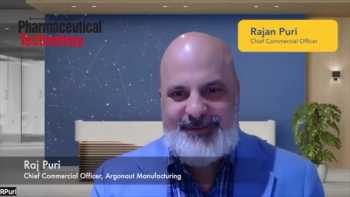
- Pharmaceutical Technology, September 2022
- Volume 46
- Issue 9
How Integrated Project Delivery Enables Speed: A Phase-By-Phase Guide
By eliminating the waste involved in traditional approaches to project set-up and execution, integrated project delivery helps innovators in the European life sciences market meet their fast-track delivery targets.
The European life sciences industry is red hot. The DACH (Germany, Austria, and Switzerland) region alone, attracted nearly 20% of Europe’s biggest life sciences investments last year (1). With this influx of cash comes the potential for commercial success and for a new generation of advanced, life-saving therapies. To unlock that potential, though, life science innovators need more—more manufacturing capacity, more flexibility, and more expertise to get their products to market faster.
The key to ‘more’ is sometimes ‘less’: less wasted effort, more value for the project owner; less fragmentation between teams, more shared expertise. These subtle shifts are the key to delivering complex, high-value facilities faster and more cost-effectively. The shifts are not easy to embrace, but they will pay off a hundredfold for teams who successfully make the transition. That means adopting a lean culture and using it to power an integrated project delivery approach (2).
The terminology of integrated project delivery
A vocabulary has been developed that turns the idea of integrated project delivery into a concrete, phase-by-phase practice, helping the benefits of the approach be leveraged in the conference room, at the jobsite, and inside the working facility (Table I). Embracing this vocabulary is the first step in making the cultural shift from traditional delivery methods that can no longer withstand today’s pressures to a method that’s much more capable of supporting fast-track delivery.
Shifting from the left side of Table I to the right can feel uncomfortable. This discomfort may be particularly true in the European market, where project owners have a long tradition of compartmentalizing tasks and distributing them to different localized vendors in a highly regimented and fragmented system. Procurement teams are comfortable with the control implied by this approach, but an increasing number of companies, under constant pressure to move at warp speed, are recognizing its deficiencies.
That discomfort was revealed when CRB asked more than 500 life sciences leaders to rank their preferred project delivery method, and then to disclose their level of satisfaction with that method. The results, which are included in the 2021 Horizons: Life Sciences report (3), show that traditional project delivery ranks near the top in terms of preference, while integrated project delivery sits in last place. The reverse is true when it comes to overall satisfaction, which respondents judged based on quality, speed, and cost: integrated project delivery shoots up the rankings, while traditional methods fall dead last.
Although the survey focused on the North American life sciences market, this trend is playing out on a global scale. Companies are looking for alternatives to the approach they’ve always known to get results they’ve never seen before. But what does it look like to leave well-established but underperforming delivery methods behind, and embrace integrated project delivery?
The business case alignment phase
During this phase, the project team collaborates with the owner to understand the project’s overarching ‘why’. What are the business drivers behind this project? What does the owner hope to achieve? What value does the owner expect to get for their investment?
The project team can then pressure-test this vision within the project’s cost and scheduling benchmarks. Experts from the owner’s side work with their design and construction partner to evolve, revise, and sharpen that vision until they’re certain that it’s achievable within those constraints. That early certainty becomes a commitment, which will shape all future decision-making on the project.
This phase diverges from the early stages of a more traditional project in one important way: instead of immediately developing solutions, the team starts by developing a shared understanding of the problem they’re trying to solve.
Rather than costing more time, this approach actually accelerates the overall project timeline by creating an opportunity for the client to share their knowledge, project requirements, specifications, and other variables up front. This early disclosure of critical information positions the project team for a more streamlined downstream process—no stalling while the team waits for important details, and no confusion over the project’s target scope, cost, or schedule.
The chartering phase
The lean principle of ‘respect for people’ plays an important role across the whole integrated project delivery lifecycle, but its greatest impact is felt during this phase, which has one goal: to establish a fully integrated project team, united by a shared commitment to the project’s target value.
The first step in this phase is to onboard selected trade partners and invite them to the table alongside the project owner and manufacturing service provider. This step looks very different from more traditional approaches, in which trade partners have no influence over early decision-making, despite their specialized expertise. The chartering phase corrects this missed opportunity by soliciting that expertise from day one.
This early integration of upstream and downstream stakeholders creates a cohesive, end-to-end project team, and it invites that team to collaboratively define the project’s conditions of satisfaction. Team members are empowered to identify which deliverables will play a role in meeting those conditions and generating value. If a particular deliverable isn’t mission-critical, it’s cut from the process—even if that’s “how we’ve always done it”. Using this approach, team members can stay focused on the project’s target value without wasting effort on extraneous activities.
Early team integration has another key benefit: thanks to the cross-pollination of expert ideas and solutions from day one, the chartering phase enables early cost and scheduling certainty and maximizes the impact of lean tools like target value delivery (4). As a result, all team members are in a position to make a firm commitment to the same objective, with the understanding that all team members share the project’s risks—and its rewards.
The chartering phase drives early cost certainty
Some project teams focus on a chartering document. That’s a good first step, but we find that prioritizing on the process of chartering—rather than its deliverable—is the key to early cost certainty (Table II).
The execution phase
The benefits of integrated project delivery multiply as projects evolve. By this phase, they’re abundant. The challenges that snarl progress and drive costs higher during typical downstream delivery—challenges like design clashes, frequent requests for information, or supplier delays—are reduced or eliminated, thanks to the early integration and input of the cross-functional project team.
Removing these challenges is just one advantage of integrated project delivery. What this approach adds to the delivery lifecycle matters just as much. Take long-lead equipment, for example. Because the integrated project team is able to reach design certainty much earlier, they can manipulate the sequence of deliverables based on supply chain timelines and other constraints. This adds even more speed and flexibility to the project, helping to ensure on-time delivery. It also adds to the project’s quality and safety profiles, because project teams have more opportunities to shift certain construction activities from the unpredictable environment of a jobsite to the controlled conditions of an offsite manufacturer (5).
The turnover phase
When discussing the critical role of bringing experts from across the delivery lifecycle to the table as early as possible, the indication is to bring in all experts—including the commissioning, qualification, and validation (CQV) team. Their input during early decision-making pays off here, during the turnover phase, when the integrated team is close to realizing the project’s target value but still faces the hurdle of transferring substantial knowledge, documentation, and responsibilities to the owner.
Because of the CQV team’s early input and consistent participation in the project’s evolution, this process happens smoothly and quickly under an integrated project delivery approach. Rather than waiting for the building’s physical completion, the CQV team is able to proactively maintain accurate as-built drawings, systems manuals, and other critical documents throughout the delivery lifecycle. This approach dramatically reduces the back-and-forth that’s typically necessary to organize and share building information with the facility’s operations and maintenance team, and it helps owners unlock the full value of their new asset from the very first day of operation.
Get on board with integrated project delivery
On its own, integrated project delivery is not a silver bullet. For it to generate and maximize value for project owners, it needs the support of a lean delivery team that’s fully committed to shifting away from the traditional mindset and towards a new, improved way of working. That’s where the power of integration comes to life—and it’s where tomorrow’s life sciences leaders will find the resilience, flexibility, and speed they need to survive today’s pressures.
References
1. J. Smith, “European Biotech Investors Cap Off Record Year in Fundraising,” News, labiotech.eu, 10 Dec. 2021.
2. R. Kidmose, E. Unrau, and C. Aktar, “Accelerating Project Delivery with a Lean Alternative to DBB,” PharmTech Eur. 33 (12) 34–36 (2021).
3. J. Bornholdt and D. Kearney, To Accelerate from A to Z, Try PPMOF, CRB Horizons Life Sciences Report, pp 73–79, 16 Nov. 2021.
4. R. Little and C. Seese, “Target Value Delivery Success: 3 Best Practices to Hit the Bullseye,” Insight Feature, CRB Group, 13 July 2022.
5. D. Kearney and M. Politi, “Improve Project Performance with PPMOF Strategies,” Insight Feature, CRB Group, 13 July 2022.
About the authors
Christian Goesker, managing director, Thomas Lederer, office lead, director EPCM Projects, and Mike Barrett, vice president, Project Delivery Services, all at CRB Group.
Article details
Pharmaceutical Technology Europe
Vol. 34, No. 9
September 2022
Pages: 19–21
Citation
When referring to this article, please cite it as C. Goesker, T. Lederer, and M. Barrett, “How Integrated Project Delivery Enables Speed: A Phase-By-Phase Guide” Pharmaceutical Technology Europe 34 (9) 2022.
Articles in this issue
over 3 years ago
Pfizer’s Idea Orchardover 3 years ago
Exploring Options for Optimizing Cell Line Developmentover 3 years ago
Reducing Blind Spots in the Pharma Supply Chainover 3 years ago
Delivery Kinetics for Topical Drugsover 3 years ago
Delivering a Difference in Formulationover 3 years ago
Advances in Environmental Monitoringover 3 years ago
Robust Bioanalytical Studies Can Aid in Regulatory SubmissionsNewsletter
Get the essential updates shaping the future of pharma manufacturing and compliance—subscribe today to Pharmaceutical Technology and never miss a breakthrough.




